I also interviewed Tom Shapiro, the CEO of Stratabeat, an agency that uses PageSpeed Insights, as well as some other tools, when optimizing websites for clients. I’ll explain Google PageSpeed Insights and walk you through how to use it to improve your website's speed and performance.
Table of Contents
- What is Google PageSpeed Insights?
- What is a good Google Pagespeed score?
- How to Use Google PageSpeed Insights to Test and Improve Website Speed
- Google PageSpeed Insights Alternative
- Tips and Tricks for Google PageSpeed Insights
- Test Your Website Speed With This Google Tool — But Don’t Stop There
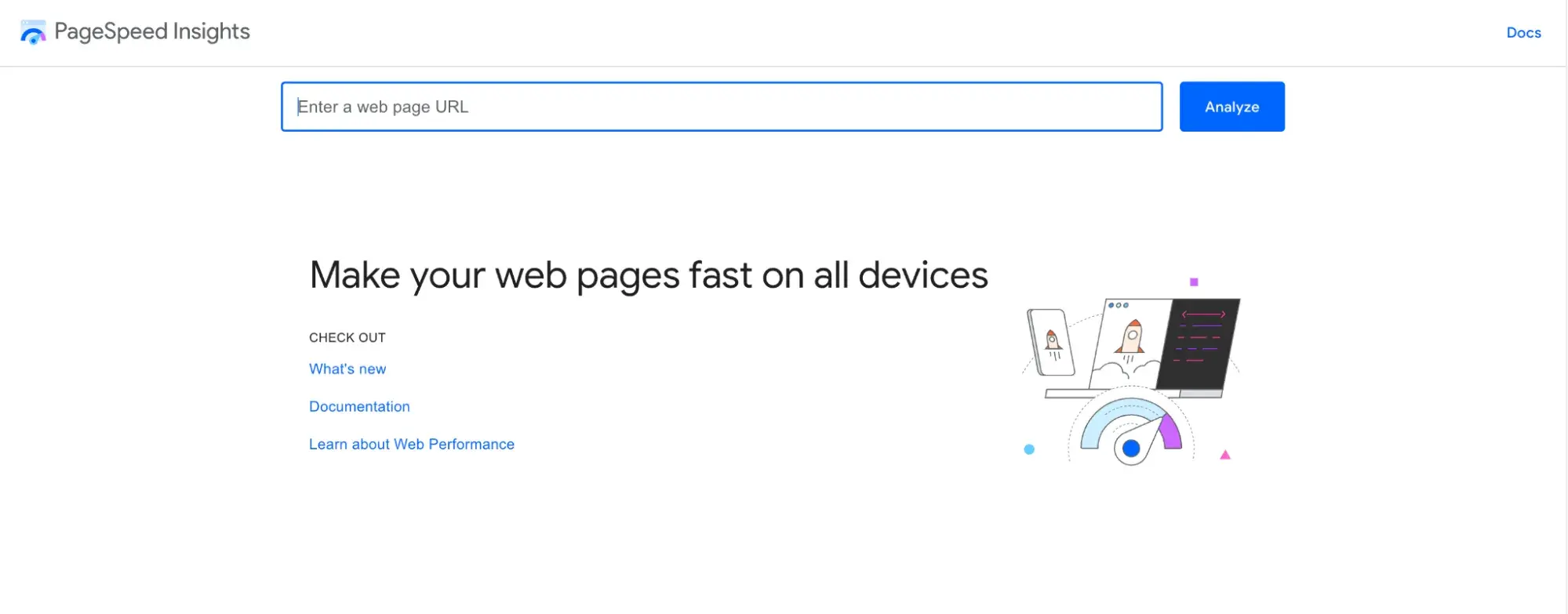
The tool provides reports for two categories: First, how fast your page loads on mobile devices (the “Mobile” score), and second, how quickly it loads on desktop devices (the “Desktop” score).
Google PageSpeed Insights also provides a list of optimization suggestions that can speed up your page. These suggestions range from optimizing images and improving server response time to using browser caching and minifying CSS/JavaScript files.
By following these optimization suggestions, you can drastically improve your website performance and make it faster for users.
What is a good Google Pagespeed score?
If you listen to Google’s official documentation, it’ll tell you that “good” is a score of 90 and above — but that's not a realistic goal.
Instead, Shapiro recommends aiming for:
- 50 or 60 and above on mobile
- 90 or 95 or above on desktop
That mobile score really matters because Google’s ranking algorithm is mobile-first.
“Google is going to judge your website based on the mobile version of the website, which means you absolutely need to have it higher than 50,” says Shapiro.
But wait — why is it okay to have a lower PSI score on mobile than desktop?
“Because mobile is always going to generate a lower score,” explains Shapiro. “Mobile is always going to take longer to load than a desktop. Typically, when you‘re on desktop, you have a very high-powered connection to the internet … whereas with mobile, it’s often just a slower connection.”
Try as you might, you’ll likely never get a “perfect” score of 100. In all his years, Shapiro has never seen it, but he’s gotten pretty close.
“We have achieved 99 on desktop on multiple websites that we‘ve built,” he says. “So that’s very achievable.”
How to Use Google PageSpeed Insights to Test and Improve Website Speed
Using Google PageSpeed Insights is simple and free. However, while the tool diagnoses problems and suggests solutions — it doesn't do any of the actual work. You'll need to make the necessary changes yourself to improve your page performance.
“It's not 100 percent accurate,” advises Shapiro, “but it is a fantastic guide. So I would use it as a directional guide as opposed to, say, something that is definitive.”
Want to see it in action? Here’s how I used it on one of my blogs, which, admittedly, I’ve been neglecting for over a year. It definitely could use some performance improvement, so let’s see what PSI has to say about it.
Step 1: Enter the URL of the website you want to analyze.
First, I entered my blog’s URL and clicked “Analyze.” The tool ran an analysis for a few seconds before delivering a comprehensive report with data and optimization suggestions.
Depending on the size of your site, it may take a few seconds to a minute to generate.
Step 2: Review the detailed report.
Once it finished analyzing, Google PageSpeed Insights delivered a report on my website’s performance in two categories: mobile and desktop. It provides scores ranging from 0 to 100 (the higher, the better).
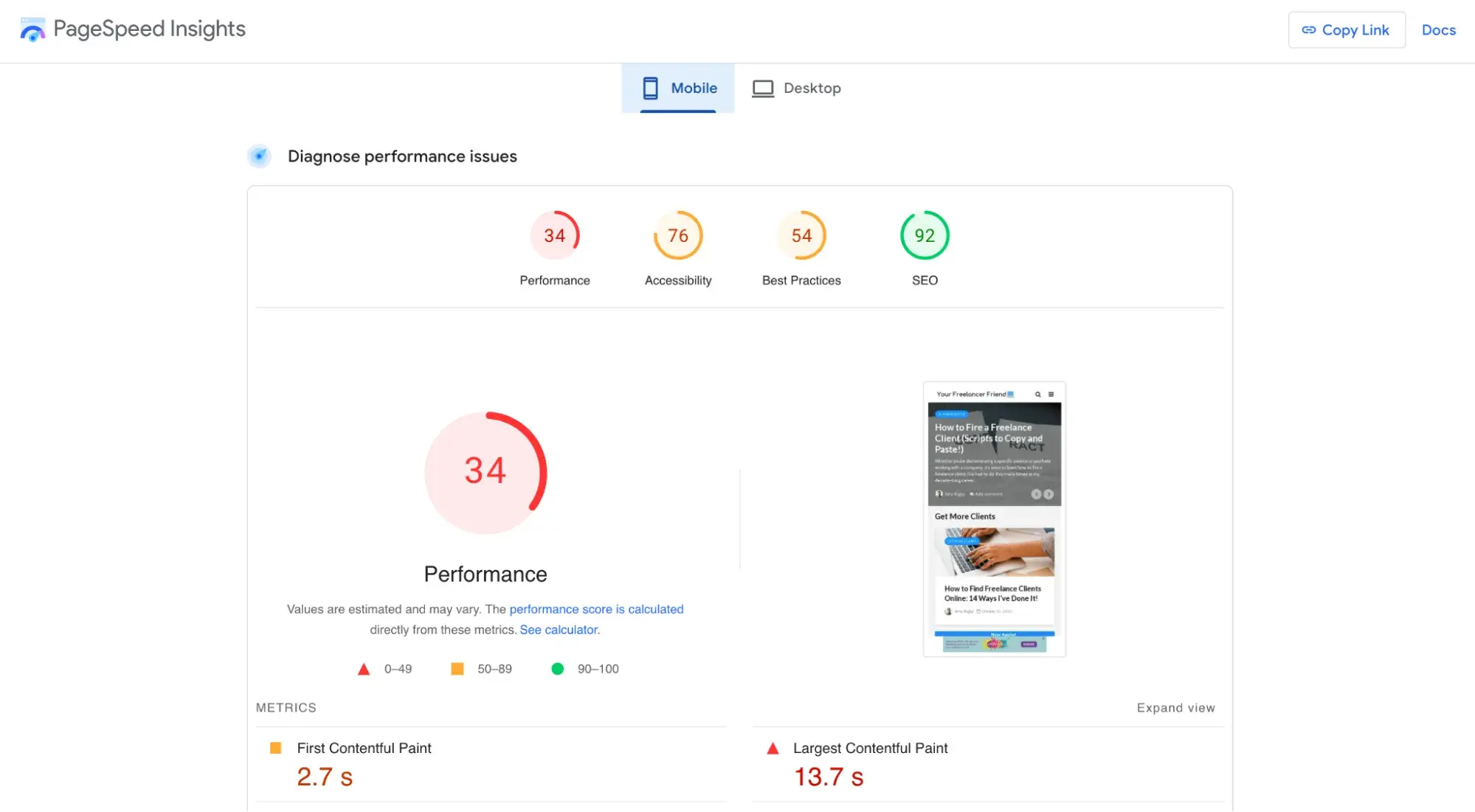
Google PageSpeed Insights uses a variety of speed metrics to measure the performance of your website. Here are some of the most important ones:
- First Contentful Paint (FCP): Measures how quickly a web page renders its first visible content.
- Speed Index: Indicates how quickly the majority of a page's content is displayed in the browser window.
- Largest Contentful Paint (LCP): Indicates how long it takes to render the largest image or text block on a page.
- Time to Interactive (TTI): Measures how long it takes for a page to become fully interactive and usable.
- Total Blocking Time (TBT): Indicates the total amount of time that a web page is blocked from responding to user input.
For each metric, you can click the arrow to find more details. It will even link to more information about that specific metric and how you can improve it.
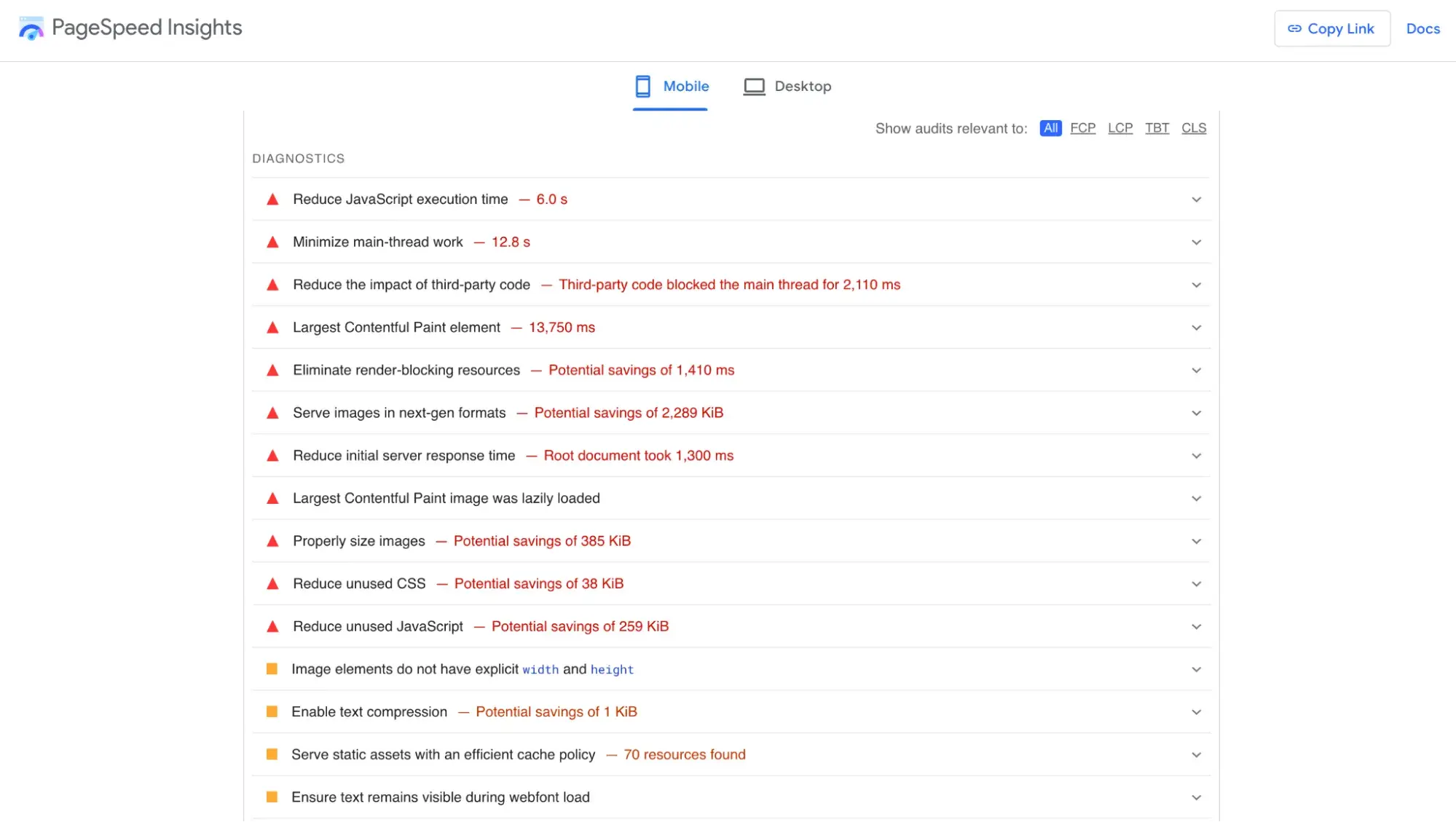
For example, server response time is an essential metric for me, so I delved into that one. PSI says it’s too slow.
Step 3: For each metric that shows red, implement the suggestions to improve it.
Yes, Google PageSpeed Insights truly is personalized to your website. It could tell that my blog is on the Ezoic platform, which comes with specific caching capabilities that could improve my server response time. So, you’ll see that PSI actually told me to enable Ezoic Cloud Caching and linked me directly to the Ezoic dashboard:
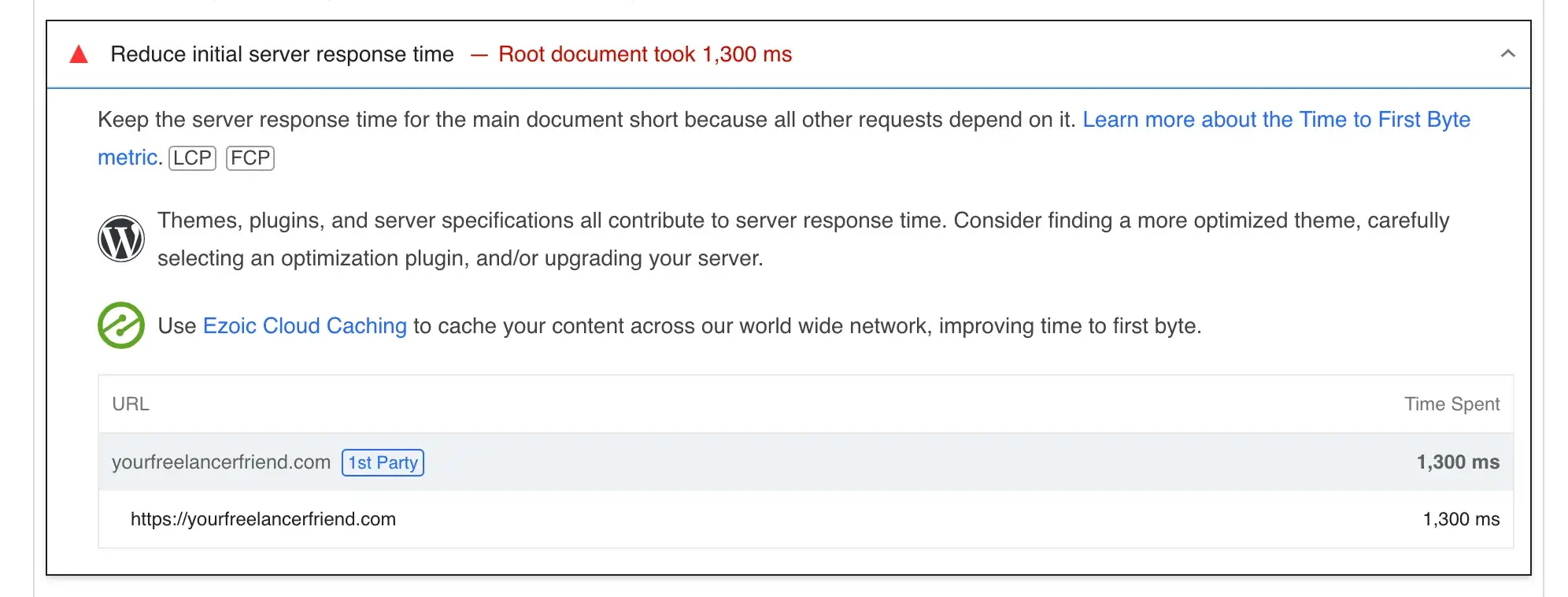
So I followed PSI’s advice and enabled cloud caching in Ezoic, which was insanely simple. All I had to do was change my nameservers.

After a few hours, I checked my blog in PageSpeed Insights again, and voila! The server response time was way faster — it went from 1,300 milliseconds to 40!
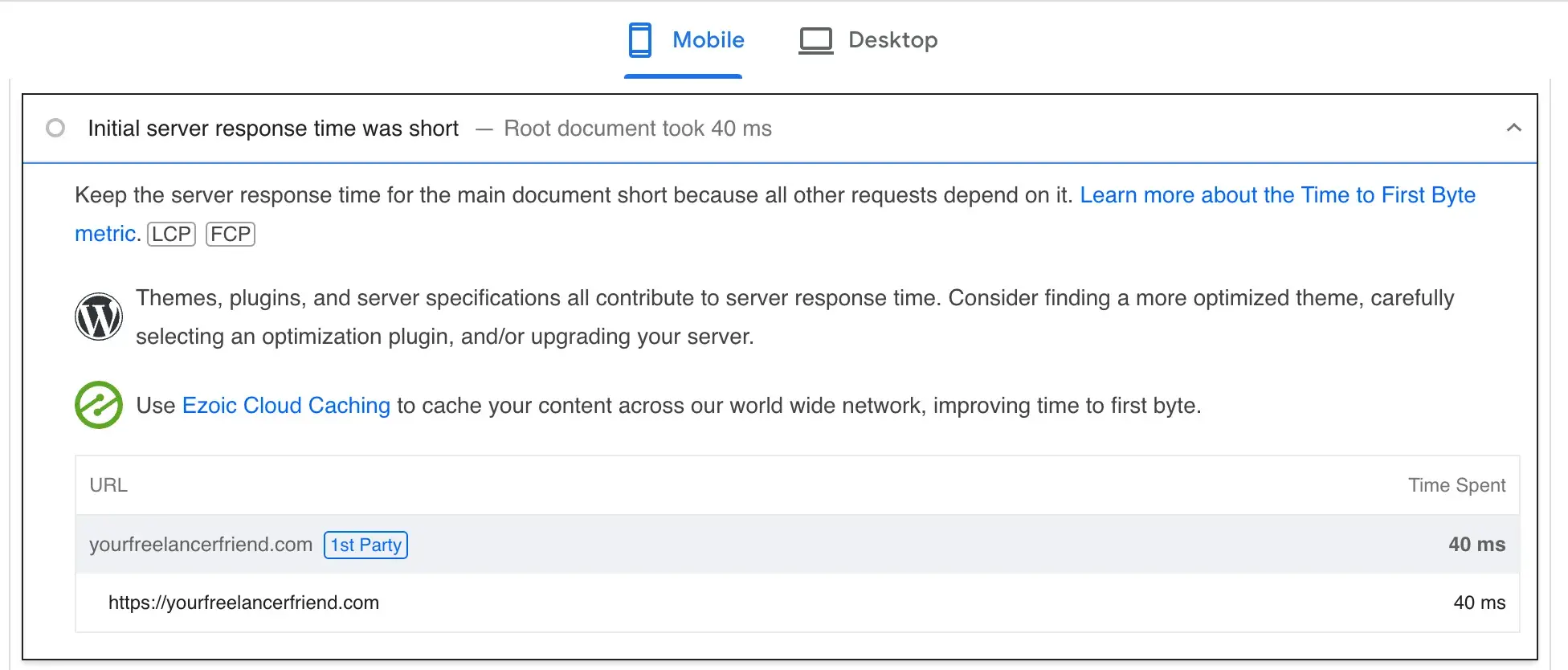
So yep, I’m confirming that Google PageSpeed Insights does help with website speed (you just have to implement the advice it gives).
Google PageSpeed Insights also gave me detailed instructions on how to improve my server response time:
“Themes, plugins, and server specifications all contribute to server response time. Consider finding a more optimized theme, carefully selecting an optimization plugin, and/or upgrading your server.”
Based on this information, I contacted my web host’s support team to ask what I could do to upgrade my server. They informed me that I was on the cheapest hosting plan, which uses shared servers, resulting in an affordable plan but subpar performance.
They advised me to upgrade to a plan with more CPUs and dedicated resources to speed up server response times. However, I was so pleased with the performance improvement from enabling Ezoic Cloud Caching that I didn’t even bother upgrading my server.
Google PageSpeed Insights Alternative
Using Google PageSpeed Insights was super easy, but I found the report overwhelming. It has dozens of rows, and it’s not pretty to look at. It’s hard to tell what next steps I should take.
One tool I found way more user-friendly is HubSpot’s free Website Grader, which is powered by Google Lighthouse — the same tool behind PageSpeed Insights!
First, Website Grader doesn’t take nearly as long to deliver the report as PSI. Second, it boils the report down to the essentials and provides a “next steps” section so it doesn’t overwhelm you.
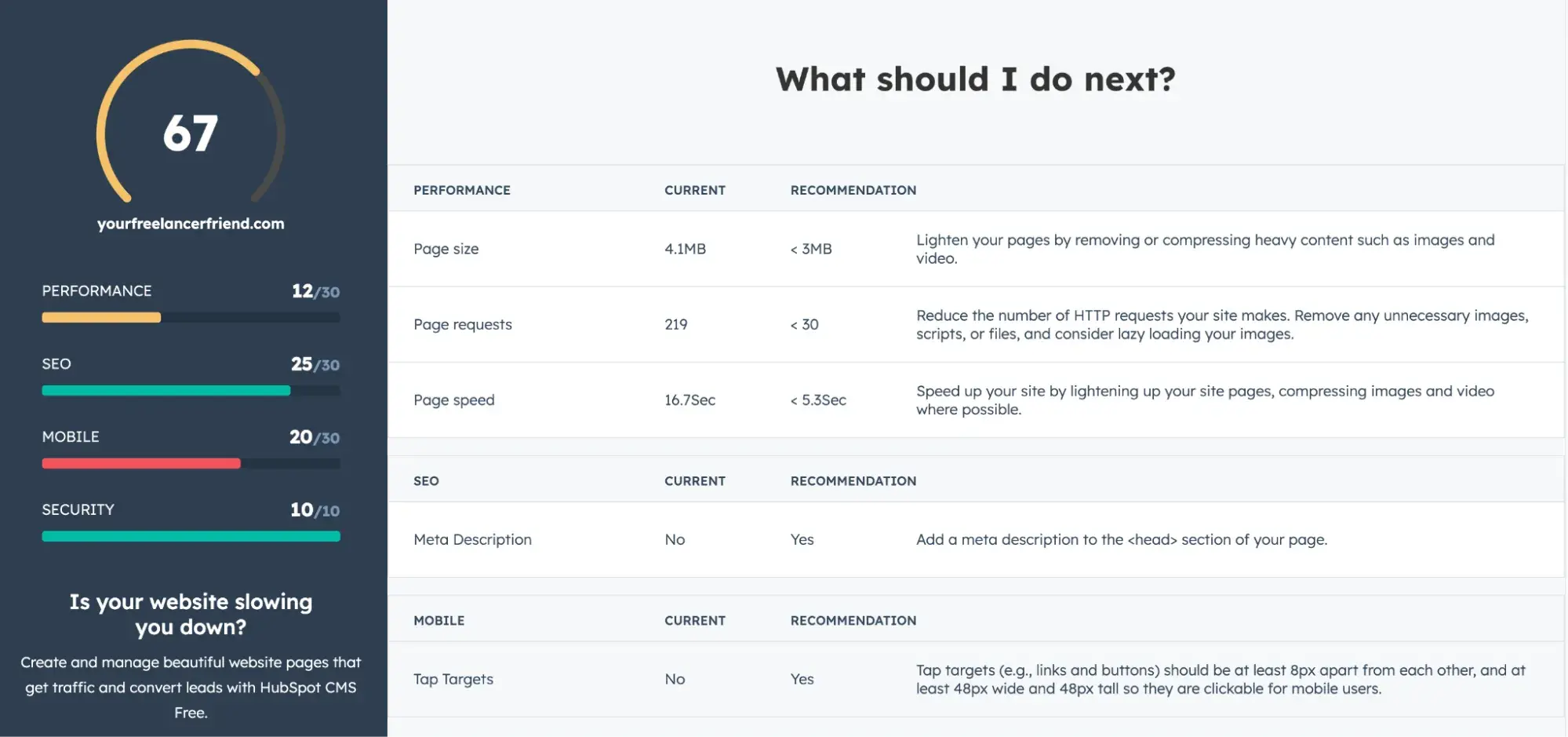
Third, it shows results in a much more appealing format. And lastly, its webpage copy is just way funnier (and as a writer, this pleases me).


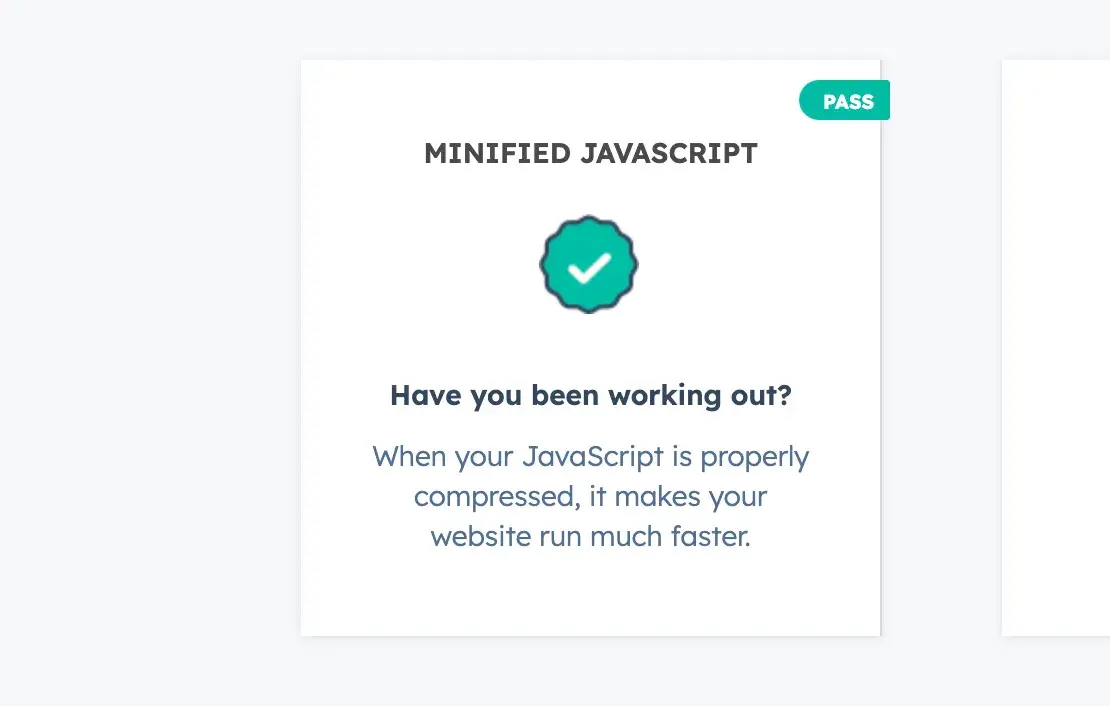
Tips and Tricks for Google PageSpeed Insights
Using Google PageSpeed Insights is a great starting point to improve the performance of your website. To make sure your pages are running at their peak, here are a few tips and tricks:
- Make sure you're using properly sized images: If the images on your page are too large, they will take longer to load, resulting in slower page speed. Before you upload images to your site, try a free compressing tool like TinyJPG to reduce their file sizes.
- Minify your CSS/JavaScript files: Minifying these files will compress them, reducing their file size and resulting in faster page loading times.
- Leverage browser caching: Enabling browser caching allows browsers to store web files locally, so they don't have to be downloaded each time a user visits your page.
- Enable compression: Compressing page content can help reduce the amount of data transferred from the server, resulting in faster loading times.
- Optimize for mobile: Mobile devices are usually slower than desktop computers, so make sure you optimize your web pages for mobile users.
Test Your Website Speed With This Google Tool — But Don’t Stop There
Even though I’ve used Google PageSpeed Insights for years to check my website speed, I was still surprised by how useful it was at optimizing one of my old, neglected websites.
Before using PSI, my site’s load time was 2.76 seconds, according to Pingdom.

And after? It was a blazing 650 milliseconds!
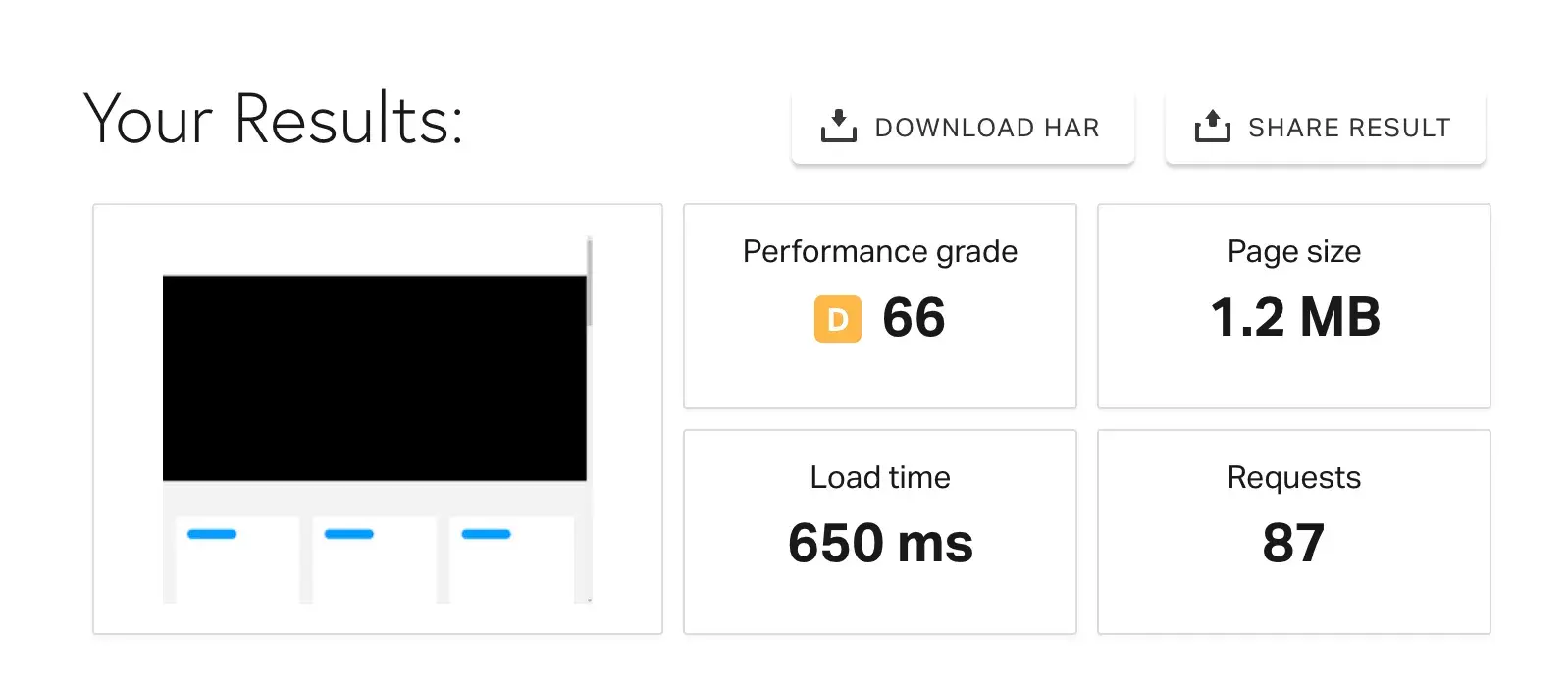
This was after implementing just one of PSI’s suggestions. Imagine if I took the time to implement each one, line by line.
Google PageSpeed Insights is a great tool for improving the performance of your web pages and ensuring that they are running at their peak. But remember — there are many other tools and strategies to optimize your website for speed and performance.
If you have a WordPress site, Shapiro recommends supplementing your PageSpeed Insights use with WP Rocket. “It's really kind of a Swiss army knife of various techniques, various mechanisms for accelerating the page load time,” he says.
Another free tool he recommends, which I use often as well, is Pingdom. Shapiro adds, “One thing that's unique about [Pingdom] that Google does not provide is it will tell you exactly how much time the page takes overall to load.”
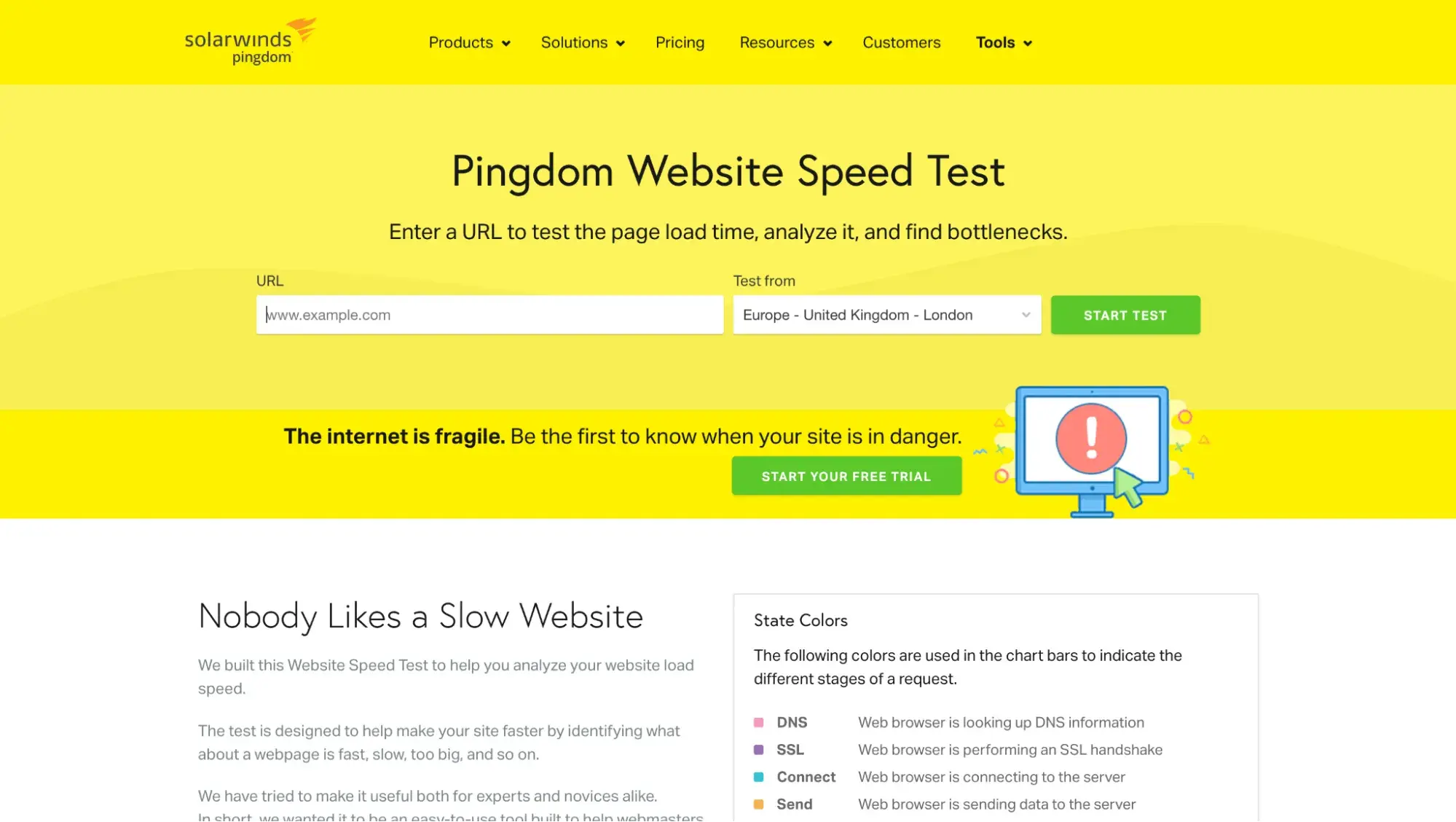
And lastly, I’d suggest trying HubSpot’s Website Grader, which is also free.
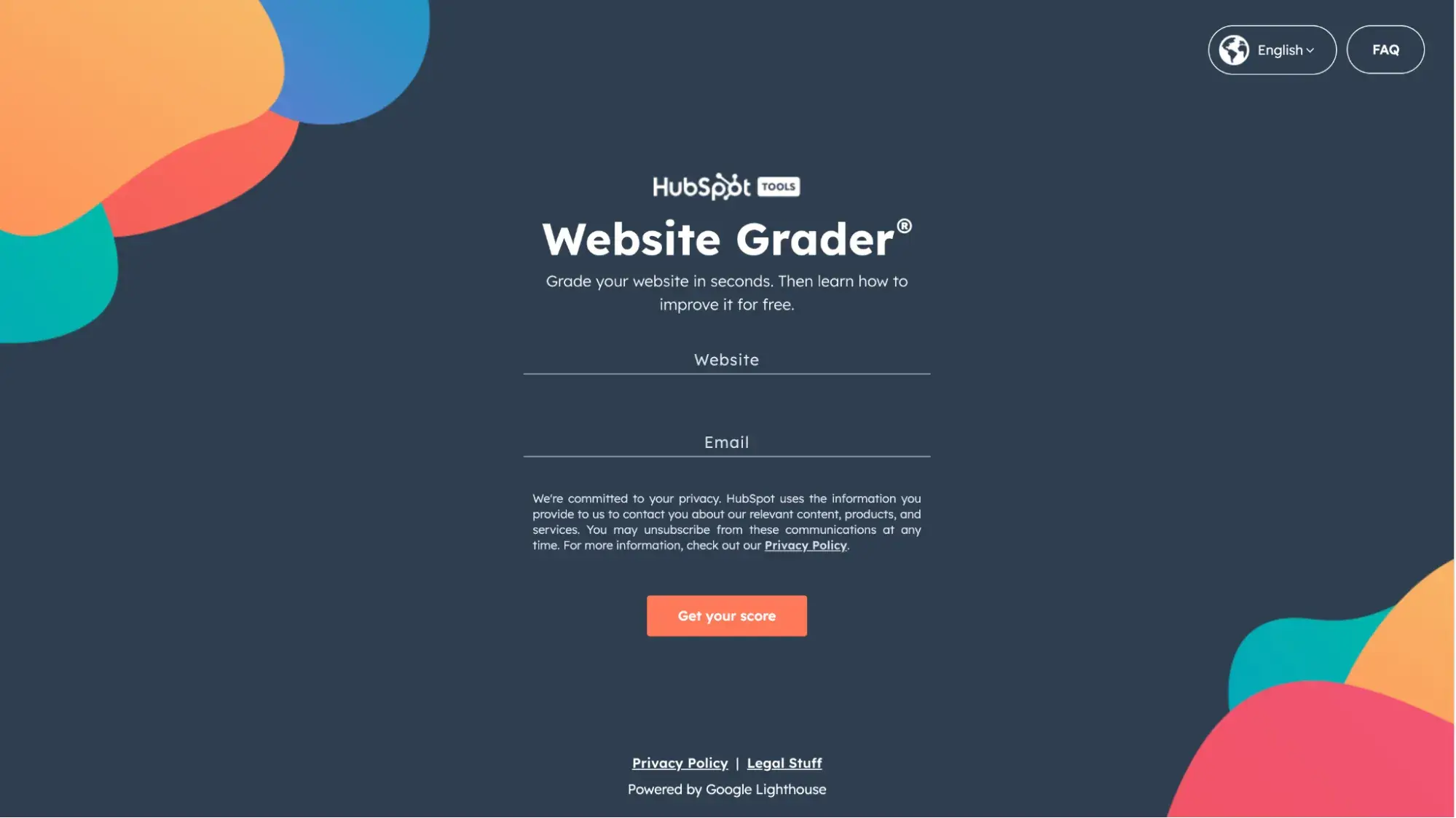
While tools like Google PageSpeed Insights can diagnose, it’s up to you to implement the changes. And once you’ve done that, you still need to regularly test your website’s speed to ensure it’s up to par.
Editor's note: This post was originally published in March 2023 and has been updated for comprehensiveness.
Website Performance

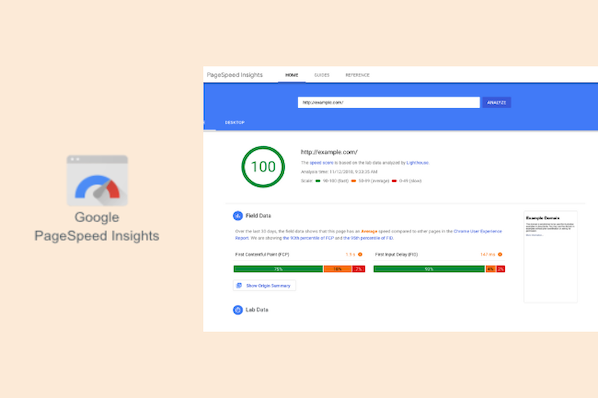
.png)





![7 Site Performance Challenges That Will Hold Businesses Back [Data + Expert Predictions]](https://53.fs1.hubspotusercontent-na1.net/hubfs/53/how-to-improve-lcp-1-20250121-126295.webp)



![19 Website Speed Optimization Strategies for 2024 [New Data]](https://53.fs1.hubspotusercontent-na1.net/hubfs/53/how-to-optimize-website-speed-1-20241203-1468927.webp)